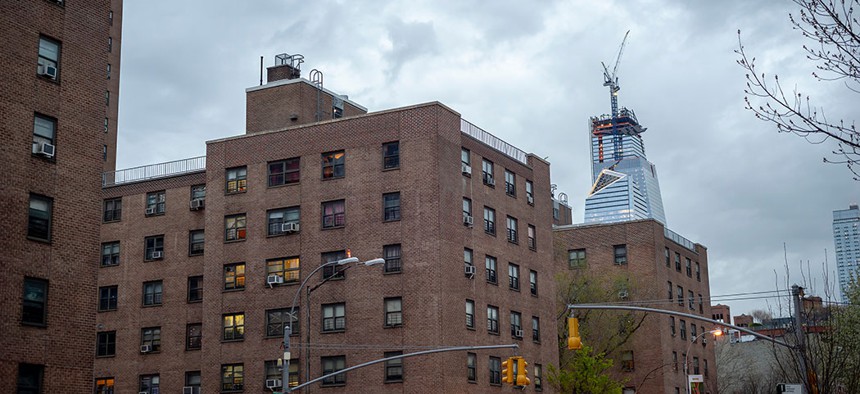Some advocates for New York City Housing Authority residents are “instilling fear” and “misunderstanding” among those who live in public housing, a NYCHA executive said Tuesday.
Deborah Goddard, NYCHA’s executive director for capital projects, spoke on a panel on aging infrastructure at City & State’s Rebuilding NY conference at Baruch College. Goddard was responding to a question from the panel’s moderator, lobbyist Suri Kasirer, on what she thought about the political challenges to NYCHA’s plan to fund improvements for living conditions for some of the authority’s 400,000+ residents. Among the plans are “infill,” or leasing underutilized NYCHA land to developers who would build new, mostly market-rate, housing. But according to a Citizens Budget Commission report out this week, those projects have stalled amid opposition from elected officials and residents, many of whom worry that the new buildings could jeopardize their own subsidized housing.
“We’ve had some advocates who have their own agenda and they are instilling fear,” Goddard said of the projects’ opponents. “I think there is some genuine misunderstanding. I also think there are some advocates who are instilling the misunderstanding. And it’s not fair to our residents to play along that way.”
Goddard suggested that opponents of infill and Rental Assistance Demonstration, better known as RAD – where the maintenance of some NYCHA developments is shifted to private operators – are being unrealistic when they say that instead the city should just build more public housing on unused land. The federal program that paid for the construction of NYCHA’s portfolio is no longer in existence, Goddard noted, and federal support for operating expenses has declined over time as well.
“To instill in the residents that (an alternative) option is new public housing is irresponsible. That program has not existed for decades,” she said. “So we need to deal with the reality.”
Another panelist, Alicka Ampry-Samuel, the New York City Council’s public housing committee chairwoman, played the role of public defender of NYCHA’s critics. “Infill is not necessarily a problem, but the way we have done infill in NYCHA on developments has been just totally disrespectful in the design,” she said. “I think that’s what creates that pushback from residents in particular.”
Ampry-Samuel said including residents in conversations from the beginning is essential – but she understood the emotional opposition. “When a building is being developed on a NYCHA campus and that building isn’t for the NYCHA residents, there’s this sense of ‘that’s not for me,’” she said.
Goddard acknowledged the difficulty of selling the infill plan at Chelsea’s Fulton Houses in particular, which has been one of the hottest battlegrounds in NYCHA’s portfolio. Some of the tenants there have been rallying against the plan for months, and have recently called for any development plans to be delayed.
“Fulton was going well for a while,” and there was momentum, Goddard said. But “the voices that are willing to be the loudest are the most negative. And that is what happened at Fulton and it’s drowned out a lot of support there. But we’re going to keep working at it.”
The discussion on NYCHA was just one piece of a full day of panels. Rick Cotton, the executive director of the Port Authority of New York and New Jersey kicked off the day with a Q&A session where he spoke about reducing the high cost of construction and improving the customer experience at airports through things as relatively simple as providing high speed wifi and clean bathrooms.
While world leaders spoke at the United Nations Climate Action Summit nearby, Cotton discussed the Port’s own initiatives on that front.
“We are looking everywhere we can, and we’re the first public transportation agency to embrace the Paris Climate Accords,” he said. “We set ourselves a goal consistent with that, to reduce our greenhouse gas emissions by 35% by 2025 and by 80% by 2050.”


